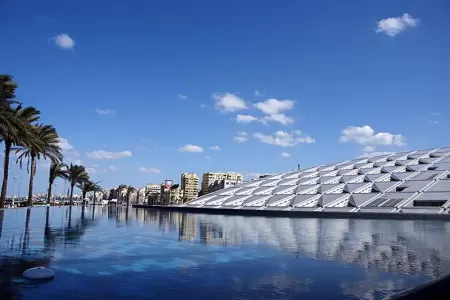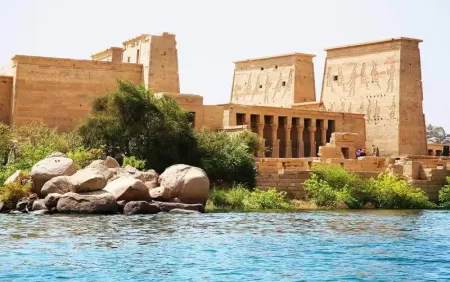A series of recreated Ancient Egyptian Cities offer sites that flourished over 3000 years ago, huge amount of cultural and historical relevance. These cities were laid out carefully on the banks of the Nile River, which is the life giving force of the ancient Egypt civilization. Ancient urban centers were divided into Lower Egypt near the Mediterranean Sea and the Nile Delta and Upper Egypt, where Memphis and Thebes were famous cities.
Memphis was the capital during the Old Kingdom and famous for its ancient Egyptian temples and monuments erected in honor of the gods, showing the expression of power and devotion of that age. Thebes, as key religious and political city, was noted for its grand temples and royal tombs, which still captivate historians and tourists.
These famous ancient Egyptian cities have enriched the Egyptian empire and heritage for good. They were also sites of worship, trade, and construction of monumental structures who shaped ancient Egypt civilization that have survived the test of time. Today, travelers explore these magnificent sites, truly into the belly of ancient Egypt.
There are numerous Cairo-based historic sites offering an unmissable experience for visitors, allowing them to witness the grandeur of the Pharaohs. and the awe-inspiring accomplishments of the ancient Egyptian civilization; these Egypt things to do are must-see highlights in Egypt Tours.
Here is a list of the top 9 famous Ancient Egyptian cities:
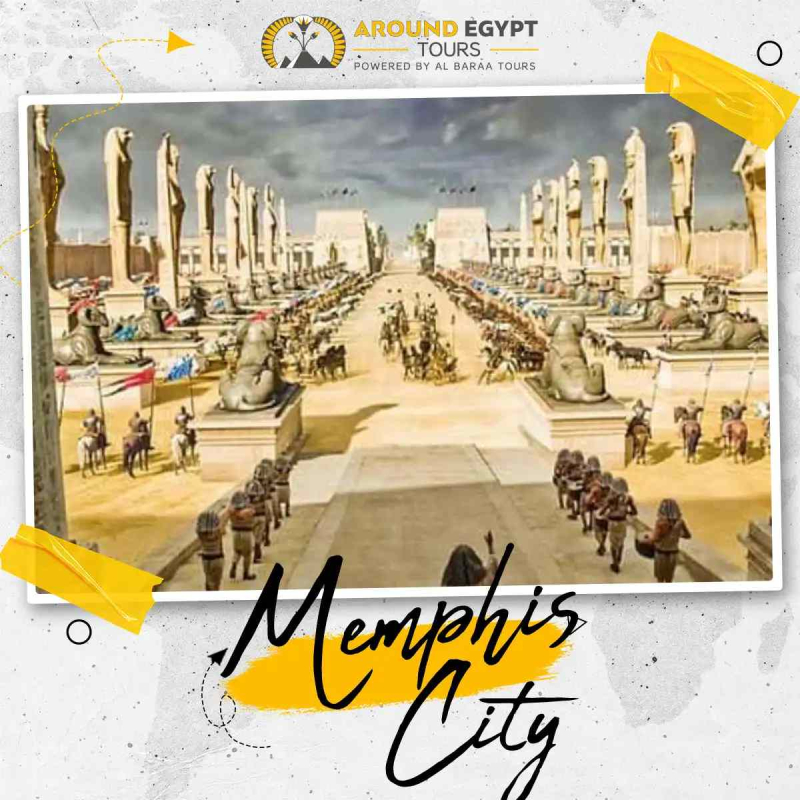
Memphis City
Memphis was one of the most renowned cities in the Egyptian empire. Located approximately 15 miles south of Cairo, the city was the first capital of unified Egypt in the Old Kingdom. Ancient Memphis served as the political center, which was equally a religious and cultural center.
This city had the Sacred Triad, Ptah, the god of creation, his lion headed consort, Sekhmet, and their son, Nefertem. Because a large temple to Ptah was built here, Memphis became a major religious site in Egypt, drawing priests, worshippers, and artists from all parts of Egypt. For those interested in visiting historic sites, the ruins of Memphis remain a remarkable testament to its past.
Memphis also nurtured an active population of craftsmen, builders, and sculptors. Many proud monuments and statues were created here, including colossally grand works of Ramses II. In other words, the city played an important role in the achievements of Egyptian architecture, a legacy that continues to be visible in the ruins to this day.
As Thebes gained political momentum, Memphis slowly lost ground but remained a secondary capital and a cultural center. Even after the establishment of Alexandria as the capital in 331 BC, Memphis held symbolic importance. Eventually, with the decline of ancient Egyptian religion and the rise of Christianity, the city was deserted.
Memphis today is one of the great locations known in Egypt. The temples, tombs, statues, and artifacts that have been uncovered by archaeologists tell the story of the former glory of the city. If planning any tour to Egypt Memphis has to be included on your list.
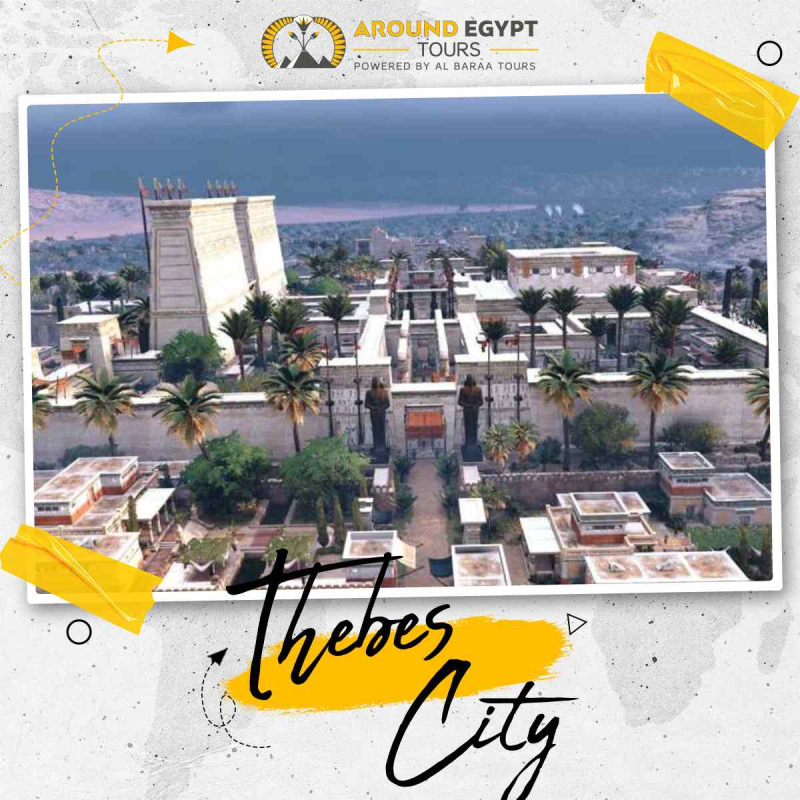
2. Thebes City
With a history spanning millennia, Thebes was found functioning as the capital of Egypt under the New Kingdom period, that is, between 1570 and 1070 BC. Situated about 675 km to the south of Cairo on the eastern banks of the Nile, Thebes was an ancient religious, cultural, and political center.
Amun was the creator god and greatest god of the Theban Triad. Thebes was thus an important stop on Egypt Sightseeing Tours and Egypt Excursions. The great Greek poet Homer referred to Thebes as "the city with a thousand gates." Therefore, it was a city of paramount importance, not only as a spiritual center but also as the political center where Pharaohs exercised their power and built the history of Egypt.
Thebes featured several key festivals of Ancient Egypt. The Opet Festival lasted for 27 days and celebrated the union between Amun and his wife Mut, with feasts being held in almost every part of Egypt; and the Festival of S, which lasted 11 days, involved the transportation of the statues of Amun, Mut, and Khonsu from Karnak to the Luxor Temple by boats down the Nile. These are just a few of the many things to do in Egypt that create a link between visitors and the ancient ways.
Another brilliant landmark Thebes for history and culture, continues to be the utmost stop. The ruins and monuments are a tourist attraction from all parts of the world. Thus, Thebes is an absolute must-visit for anyone undertaking Luxor day tours. Its legacy stands as a proud testimony to the glory of ancient Egyptian civilization and remains one of the best things to do in Egypt for history buffs.
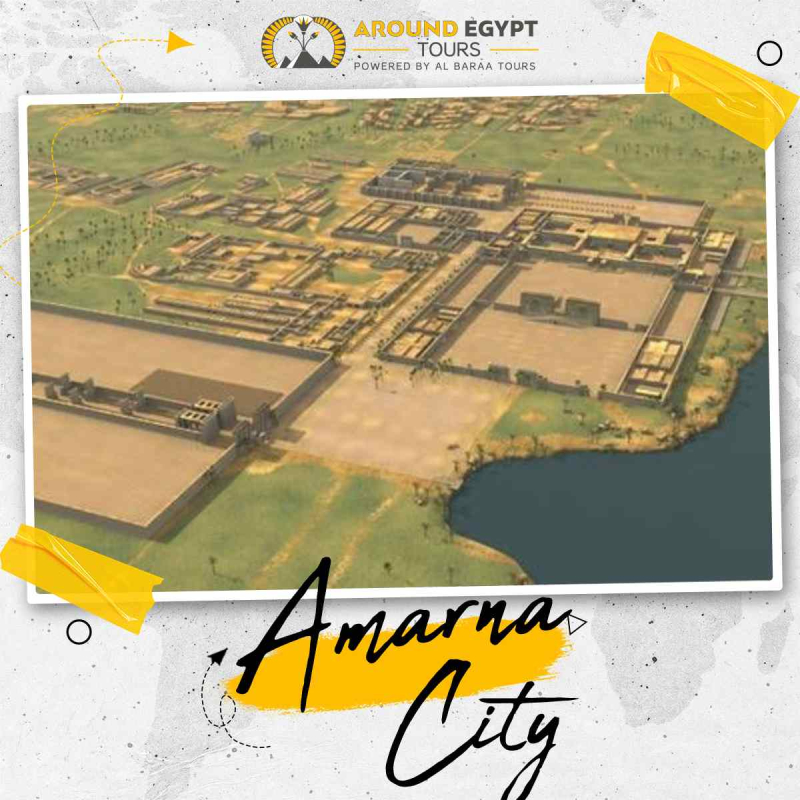
3- Amarna City
One of the most fascinating yet often underrated famous ancient Egyptian cities, Amarna was built by Pharaoh Akhenaten and served, albeit briefly, as the capital of Egypt. Located on the east bank of the Nile, Amarna is an important site for those interested in exploring a fairly unusual chapter in ancient Egypt civilization and the history of the Egyptian empire.
It was perhaps at the heart of one of Egypt's most disputed and controversial religious transitions. Akhenaton tried to do away with the traditional polytheistic system of Egypt and impose the monotheistic worship of Aten, the sun disk god. Although the religion was very short-lived, the period remains quite complementary in the cultural treatment of ancient beliefs and political struggles, reflecting the unique dynamics of the Egyptian empire.
What makes this city worthy of a visit are the unique architectural styles and art. Several ancient Egyptian temples were constructed in the city for the worship of Aten and feature extremely detailed carvings and reliefs. Walking through the ruins is as though one is walking through history, with the architecture and art enlightening one on the life of that period. These peculiarities make Amarna one of the most fulfilling experiences one can connect with in Egypt.
Amarna continues to amaze some with its historical depth and visual beauty, although it is not as well known. It is a critical destination in select Egypt excursions and day trips away from Cairo for travelers willing to take the less travelled path. Its ruins communicate the story of ambition, belief, and change that contributed to the development of ancient Egyptian history.
Planning any Egypt day tours or looking for alternative things to do in Cairo should consider an excursion to Amarna. The site breathes history, making it one of the most mind-boggling stops on any Egypt sightseeing tour.

4- Avaris City:
Undoubtedly, one of the most charming and famous ancient Egyptian cities, Avaris holds a special place in the hearts of those who investigate the less famous aspects of Egyptian history. The northeastern corner of the Nile Delta region held Avaris in prehistory present day Tel El-Daba once a capital of Egypt during the Hyksos period (1783–1550 BC). Its strategic position made it an important competitor for trade and administration in ancient times.
This city interestingly presents a treasure of archaeological finds for visitors and researchers alike. Avaris gives a window into the civilization of the Hyksos, a group that is peculiar and dominant in the history of ancient Egypt. The discovery of copper swords, burial items, and ceramics, among others, led historians to piece together the everyday life and culture of the people who went about their regular trades there. Probably one of the most engaging experiences at Avaris is for anyone really interested in ancient culture and archaeology.
Avaris was a major player not only in the ruling of Egypt itself but also as a foremost factor in shaping the external trade networks of early Egypt. The ruins and remains of structures will fascinate anyone wanting to get to the bottom of Egyptian civilization. The architectural layout of the city and the foreign goods stand as testimony to the multicultural influences that pervaded Hyksos rule.
Today, Avaris City still remains a great archaeological site and meaningful destination for history enthusiasts.
A visit to Avaris will stitch together an exciting and often underappreciated section of Egyptian history.
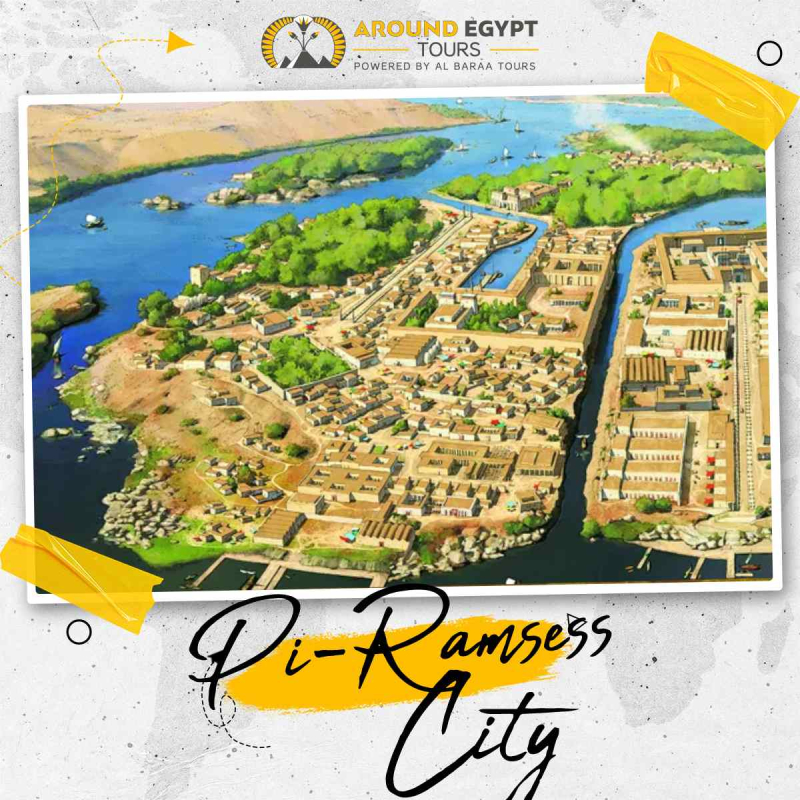
5- Pi-Ramses City
Among all the many famous Ancient Egyptian Cities, Pi-Ramsess was the real center that caught the attention of travelers of the New Kingdom variety. Built by Ramses II, the grand city stood as the capital of ancient Egypt civilization in the northeastern Nile Delta beside Avaris. Today the place remains deeply interesting to those exploring the legacy of Ramses the Great.
What made Pi-Ramsess extraordinary was that its layout was both symbolic and functional. Essentially, the city was divided into four districts, or quarters, formed around religious centers, each being named Amun, Astarte, Wadjet, and Seth. This thoughtful layout expressed the religious concept as well as the daily activities of the ancient Egyptians and is therefore one of the significant highlights for anyone studying the symbolism and history of the period.
Besides this sacred spirit in its layout, Pi-Ramsess was known for canals and artificial lakes that beautified the city yet fulfilled functional roles for irrigation and transport. Visitors can see how ancient planners reconciled urban development with the natural environment an experience that would add another layer to understanding Egypt’s history.
The city was also strewn with colossal statues, palaces, and splendid artifacts, declaring Ramses II's great wealth and power. The city was, for a time, his royal residence and remained a thriving center of culture, commerce, and administration. Pi-Ramsess was not a city of the elite. It was a vigorous society of different mutually dependent interests, from the world of culture to business and intercommunication.
Even today, Pi-Ramsess is a source of great inspiration to archaeologists and tourists alike. Its remains narrate stories of power, creativity, and association, which is why this is one of the must-visit ancient places on your Egypt sightseeing tours.
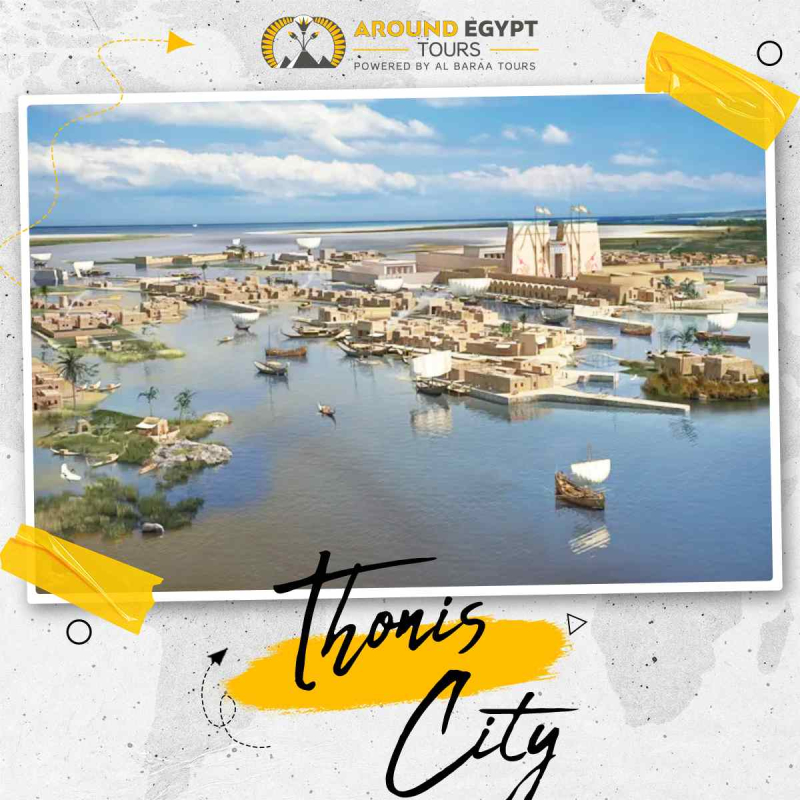
6- Thonis City:
The rediscovery of Thonis City has added a fascinating chapter to the story of famous ancient Egyptian cities. Thonis being a First Dynasty capital is thus of considerable historical and cultural importance. This site, located near Abydos in Upper Egypt, is now emerging as an intriguing point for archaeologists and travelers alike and thus creating quite a niche for itself in some specialized Egypt day tours and Egypt excursions.
Thonis was more than an administrative seat; it was a sacrosanct burial ground for the pharaohs of the first three dynasties. It was said to have been a place in heaven, positioned to lay both the tomb and mummy of Osiris, the great god of the afterlife, as per the ancient beliefs and the Book of the Dead. Visiting and exploring this ancient site would rank high among all the things to do in Egypt if one wishes to tap into the spiritual essence of Egypt.
Besides, historically, Thonis also helped in the unification of Upper Egypt. It was there that King Menes (Narmer) first proclaimed the unification of tribes, modeling the genesis of one of the greatest human civilizations. For a history lover, the option of visiting this place on Egypt day trips or Egypt sightseeing tours is perhaps a rare opportunity to stand where the ancient political transformation got its start.
Add to the mystery of Thonis by being that long-lost city. Concealed for centuries, the recent discovery has made it undoubtedly one of the most exciting places to visit on Egypt excursions for ancient sites. The ruins still unravel some mysteries about early dynastic Egypt, attracting historians, researchers, and inquisitive travelers.

7- Alexandria City
This ancient Egyptian city is one of the most famous, and interestingly, it is a phenomenon that finds its way into so many Egypt day tours and Egypt excursions. Founded by Alexander the Great in 332 BC, the city quickly rose in power to become the capital of Egypt for well over three centuries. Located strategically along the Mediterranean Awash way, Alexandria would have been a perfect destination on the Egypt day trips and Egypt sightseeing tours.
Among the drop-top wonders of ancient Alexandria remained the famous Library of Alexandria, built around 285 BC. Supposedly one of the wonders of the ancient world, this library housed thousands of scrolls that cover literature, science, philosophy, and medicine. Though it was destroyed in 48 BC, its echoes remain and continue to fascinate those seeking learning-type Egypt things to do.
In addition to its intellectual heritage, Alexandria is blessed with excellent architecture and ancient monuments still visited during Egypt day tours. The famous Pompey's Pillar, the catacombs of Kom El Shoqafa, the Citadel of Qaitbay-all key historic sites bear witness to the rich history of the city and a blend of Hellenistic and Egyptian styles. They are also often part of the Egypt sightseeing tours catered to archaeologically inclined and culturally curious travelers.
A truly strategic port and a truly global center of trade for innumerable centuries. Ships from all over the Mediterranean would berth here and exchange goods, languages, and ideas-cultural melting pot-that enriched Alexandria's vibrant identity; and even today, the visitor can feel the unique aura of this place while on Egypt day trips or day trips from Cairo.
In conclusion, Alexandria stands as a glorious instance of ancient glory. For travelers having the dream of unforgettable Egypt things to do or planning intricate Egypt excursions, taking in Alexandria bestows upon them a deep bond with Egypt's Hellenistic history, architectural wonder, and intellectual traditions. This makes it a favorite haunt for the history buffs and the ideal place to start for an explorer.
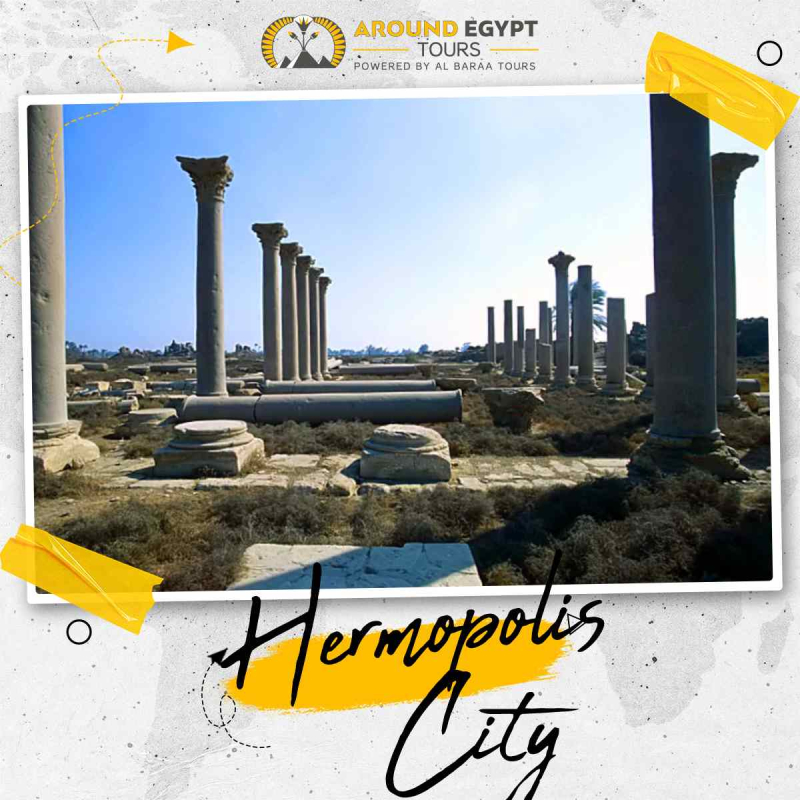
8- Hermopolis City
One of the most renowned ancient Egyptian cities that still holds a secret that attracts the attention of both historians and travelers, Hermopolis. This city in ancient times was called Khmunu and lay near the crossroads connecting Upper and Lower Egypt. Because Hermopolis was a very important religious and cultural center second only to Thebes, it has often figured in historical accounts and is now becoming an emerging stop on Egypt tours and day excursions.
The city was prosperous from the Old Kingdom period down towards Greco-Roman times (332 BC–642 AD) and was most famous for being the center of worship for the god Thoth-the god of wisdom, magic, healing, and writing. Later the Greeks identified Thoth with Hermes and hence gave the city the name Hermopolis. The Temple of Thoth was that date's highest religious edifice and thus is a must-see on many Egyptian sightseeing tours today.
From an Egypt day trip, the stunning remains of this once-great city can still be witnessed. The Temple of Thoth provides a look into ancient Egyptian spirituality with its carvings and sacred symbolism. Closer to Hermopolis is the Temple of Heryshaf and the Temple of Khnum, which further enrich the possible experiences. Thus, Hermopolis is one of the best-filled cultural things to do in Egypt.
Abandoned sometime after the Islamic conquest in 642 AD, the physical remains still inspire wonder. For those interested in a deep dive into lesser-known Egyptian history, the city is a rare find in the customized Egypt excursions and day trips out of Cairo. Its blend of mythology, learning, and architecture offers each traveler something truly special.
In summary, no list of famous ancient Egyptian cities can exclude Hermopolis. This place represents the fusion of science, mysticism, and artistic grace; hence, it can be an added highlight to any Egypt sightseeing tour and is a worthy stop on the itinerary of Egypt day tours.
.jpg)

.jpg)

.jpg)
.jpg)
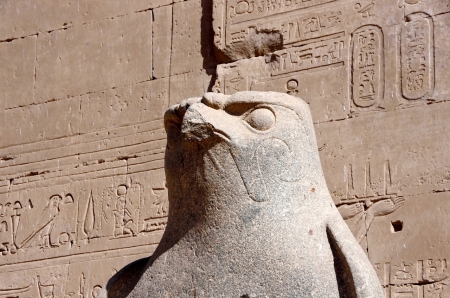
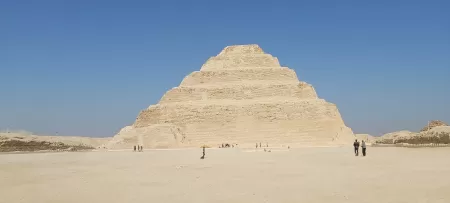
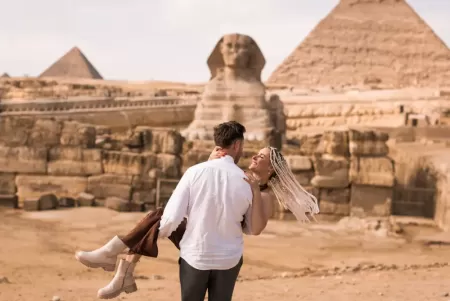

.webp)
